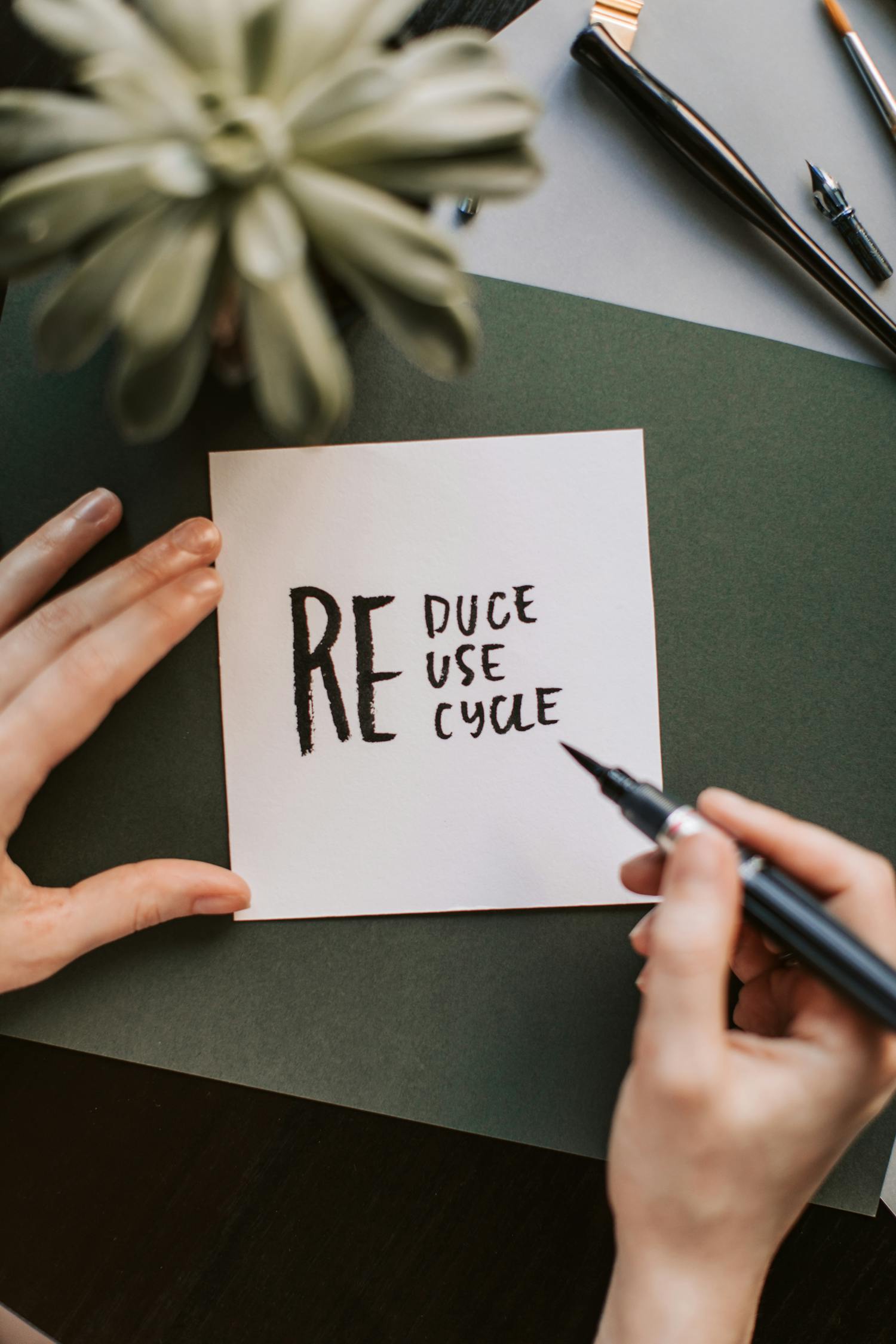In an article almost thirty years ago which talked about the waste produced in Europe, Reiner Pliz argued that recycling during that time devalued older products when we should be adding new value to them instead; coining the term upcycling. In recent years upcycling has come to be increasingly popular, especially as it helps people to live a more environmentally-friendly life, as well as it being an excellent way for old items to remain on-trend.

What can I upcycle?
You can upcycle almost any item if you know how to, from fixing your favourite mug to giving an old bag a new look—a small amount of super glue goes a long way. If you’re resourceful, then giving an old item a new purpose doesn’t have to cost the planet and can give you something quirky and unique to show in your home. For example, you can turn old glass jars that you’d normally recycle into minimalist kitchen storage. Other items you can upcycle include:
- Make face masks from old t-shirts;
- A garden mosaic made with broken or chipped cups and plates;
- A rustic bookcase that used to be a stepladder;
- A new bag made out of old jewellery and clothing.
There is also a valuable life lesson in upcycling: just because something is old and worn, it doesn’t mean that it has lost its charm. For example, the Japanese art of Kintsugi, where broken pottery is fixed using a lacquer mixed with powdered gold, teaches the life lesson that your broken pieces make you stronger. This type of restoration highlights the history that items have gone through, and how we don’t always need new items, even if capitalism makes us think we do.

Environmental benefits to upcycling
While recycling generally has more environmental benefits to upcycling, the benefits seen are enormous, not least because it minimises the materials which are sent to landfill globally each year. Unlike with recycling, it also reduces the need for producing extra materials, leading to a reduction in pollution and greenhouse gas emissions which are already having a damaging effect on the planet. Plus, when you consider that around 92 million tonnes of textile waste are produced each year, every little helps.
Being sustainable can also depend largely on where you live, with London rated the most eco-friendly city in the world to work in 2020, which isn’t surprising when you consider that over 30% of the energy used is made from renewable resources. But more can always be done, from keeping up with sustainable brands and managing our own carbon footprint.
If you’re looking for new ways to become kinder to the planet, you can do these small but simple things:
- Check you’re using energy-saving lightbulbs;
- Recycle as much as possible;
- Check how far your food has travelled;
- Use energy-efficient household appliances;
- Reuse items as much as possible.
Even though upcycling may seem like a recent trend, it can have a massive effect on reducing the waste that’s produced globally. Whether you’re cutting up a t-shirt to make masks or adding a fresh coat of paint to an old dresser, the small changes you make can have a large impact.






